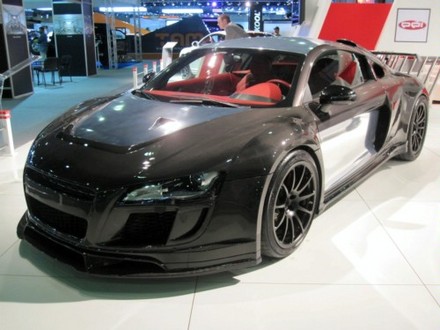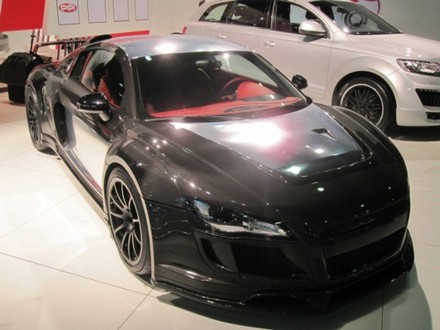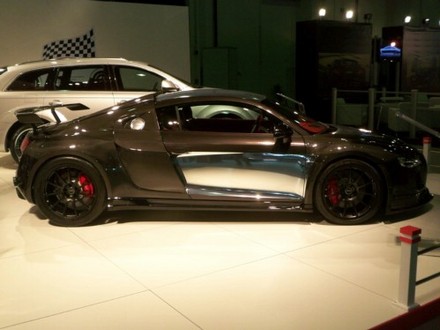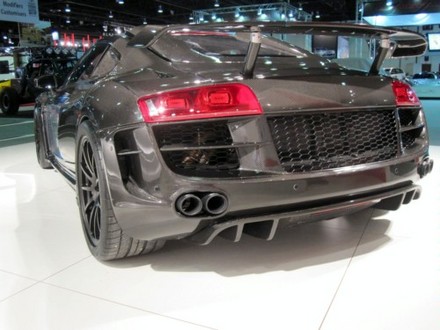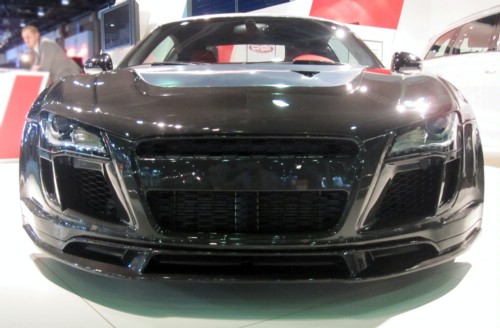The E92/3 3-series coupes/convertibles have been heralded by the media and enthusiast's alike but it has started to show its gray hairs.
Thankfully, BMW realized this and brought out its big guns to tweak her up and get it ready to go out and woo the boys.
2011 will bring about a bunch of modifications -- inside and out -- and although they seem small, they certainly add up. If you are about to order a 2010, you may want to reconsider and hold off OR if you like the current version better, it may be a good time to go cut a killer deal on the cars remaining in dealer's inventory. For someone that is detail oriented, like myself, I know that I would want to take note.
So, here is the short list without all of the marketing mumbo jumbo:
- New, standard Xenon headlights with eyebrow
- LED Angel Eyes
- New LED taillights
- Refined and widened kidney grille
- New, N55 single-turbo motor -- still produces 300-horsepower, 300 lb-ft of torque
- Redesigned front/rear bumpers
- Redesigned side mirrors
- New colors: Deep Sea Blue Metallic, Vermillion Red Metallic, Mineral White Metallic
- Modified paddle shifters are now "pull" operated -- "+" on right, "-" on left
BMW's press release follows:
Woodcliff Lake, NJ – January 16, 2011 6pm Eastern Time… BMW has announced substantial enhancements to the 2011 3 Series Coupe and Convertible, including outstanding style updates for 328i and 335i models and a new engine for 335i models. The 2011 3 Series Coupe and Convertible models will go on sale in Spring 2010, and pricing will be announced closer to the on-sale date.
Fundamentally unchanged are each car’s essential attributes of rear-wheel drive (xDrive is available on the Coupe), near-perfect 50-50 weight distribution, remarkably precise steering, and skillfully engineered suspension…all of which conspire to produce the uniquely satisfying driving experience that is quintessentially BMW.
All-new is the engine for the 335i model. Internally designated the “N55,” this turbocharged, all-aluminum engine features essentially the same “short block” and 3.0-liter displacement of its predecessor, but benefits from five additional years worth of development and refinement. The result is an engine that is more responsive, more fuel efficient, and cleaner-running than its outstanding predecessor, but preserves the previous engine’s output and soul: 300 horsepower and 300 lb-ft of torque, and a 7,000 rpm redline. The 6-speed manual gearbox – beloved by North American enthusiast drivers - remains standard, and the well-known 6-speed Steptronic automatic is optional, now featuring “pull-style” shift paddles on the multifunction steering wheel.
Design. Reflecting the legendary distinction of BMW Coupes and Convertibles
The profile of the BMW 3 Series Coupe and Convertible is instantly recognizable at first glance. Beyond the basic shape of the car and its classic lines, the new design of the headlights, the enhanced depth and detail of the taillights, the interior, and even the exterior mirrors were specifically created for the Coupe and Convertible. These unique design elements reflect the sporty character of the car. The driver who chooses a two-door vehicle desires a car with dynamic looks as well as driving performance. With this in mind, BMW engineers and designers set out to create a unique, unmistakable blend of design features and most importantly, driving pleasure.
It all begins with proportions. The new, long hood powerfully symbolizes BMW's loyalty to the inherently balanced inline-6 engine. The long wheelbase, short overhangs, the passenger compartment set aft and the low, sleek roofline which seamlessly slopes into the trunk are all characteristics of the BMW Coupe and BMW retractable hardtop Convertible.
In addition to the classic proportions, three design lines—the shoulder, character and lower sill lines— enhance the sleek appearance. Both the shoulder line and character line stretch uninterrupted to the back of the car, allowing one's eye to move quickly and smoothly from front to rear along the entire length of the car. The sill line of the lower edge of the door flows into the front and rear air dams, reinforcing the dynamic nature of BMW's newest 3 Series Coupe and Convertible.
The combination of lines flowing into one another elegantly emphasizes the vehicles’ performance potential. While the shoulder line rises slightly but consistently from front to rear, the character line flows in a long, stretched arch all the way from the front fender to the new taillights. As the sill line, by contrast, moves up slightly to the rear in a slow and gentle curve, the distance between the character and sill lines becomes smaller near the rear wheel arches. The fender flare around each rear wheel also serves to give the character line extra tension in both an upward and outward direction.
Attractive new innovations at the front, side, and rear - integrated precisely into the overall look of the car- give greater emphasis to the sportiness of both models. At the same time, these modifications slightly extend the overhangs front and rear (now 1.14” and 0.12” longer, respectively), which adds a sleeker and even more athletic appearance.
The new, widened kidney grille, a signature feature of every BMW, suits the broad new hood and stands out from the surfaces around it. Interaction with the three-dimensional kidney frame creates a look of power and unique style. The frame around the kidney grille now features a chrome band precisely twisted within itself.
The 3 Series Coupe and Convertible come standard in the U.S. with Xenon Adaptive Headlights, accented by BMW's signature corona light rings. At the top, the new headlights merge into a trim bar cutting off the light beam to create that concentrated, focused look typical of a genuine BMW. The corona rings, now powered by super-bright LED light sources, can serve as daytime running lights (if that feature is activated), and also as evening city lights, making the Coupe and Convertible instantly recognizable as a BMW, day or night. The upper edge of each headlight fixture is also illuminated by an LED light source.
The new design of the taillights is unique to the 3 Series Coupe and Convertible. The rear light cluster feature two-piece L-shapes and are further accentuated by a new color scheme. With two rows of light tubes that illuminate simultaneously, they create a night design with depth and dimension. Integrated flush into the body of the car, the lights are split into two sections and extend up the trunk lid, blending with the character lines from the side profile. Horizontal LED tube taillights give the car an unmistakable look at night. The horizontal flowing lines accentuate the wide track and low stance of the Coupe and Convertible.
An additional horizontal contour line has been added to the rear air dam to further accentuate the width of the Coupe and Convertible. It creates light-and-shade effects to give the entire rear end a flatter and smoother appearance.
The exterior mirrors also receive a new design, adding further innovation to the unique looks of the BMW 3 Series Coupe and Convertible. They blend harmoniously into the side view and silhouette of each new model.
Deep Sea Blue Metallic, Vermillion Red Metallic, and Mineral White Metallic exterior colors will each become available for the new 3 Series Coupe and Convertible this spring.
Interior: a truly stylish ambiance
The emphasis on individual style, dynamic performance and exclusivity continues within the interior. Here again, the focus is on the driving experience, as announced by the standard leather multifunction steering wheel. Horizontal lines dominate the surfaces on and around the instrument panel which blend with the lines of the center console door panels to give the interior a light but dynamic feel. In true BMW fashion, all operational and informational elements essential to driving are grouped on and around the steering wheel. Climate controls, as well as those for the audio and navigation systems, are within easy reach of the front passenger.
Because the Coupe and Convertible are four-passenger cars, the rear seat passengers are treated to a center console between their individual rear seats which includes individual storage boxes, additional air outlet vents, and footwell lights.
The BMW 3 Series Coupe and Convertible come standard with Dark Burl Walnut wood trim. As a choice, Bamboo Anthracite wood, Light Burl Walnut wood, and Aluminum trim are optional. Like the standard Dark Burl Walnut, these materials appear on the dash, front and rear consoles, doors and rear side panels.
The standard leatherette upholstery is available in Black and Creme Beige. For the optional leather upholstery, luxurious Dakota leather can be chosen. Here too, the buyer may choose Creme Beige, Oyster, Coral Red, Saddle Brown, Gray, or Black. Upholstery leather appears on the seat facings, door inserts and door handle surrounds; other leather-trimmed items include the gear shift boot, handbrake grip and steering wheel.
In other items of trim that don't change with upholstery or trim options, the interior door handles, gearshift surround trim, steering wheel spokes, instrument dial and engine Start/Stop button surrounds, dash air-outlet adjusting tabs and the optional iDrive controller are in pearl-gray galvanic material.
An elegant ambiance is further created in the interior by special lighting and switches with a premium look and feel. Ambiance lighting, streaming down from under the ledge on the door and side panels, and running from the A pillar all the way to the rear passenger area, creates a particularly warm, indirect lighting effect.
Through its design and configuration, the cabin emphasizes the sporting and driver-oriented character of the 3 Series Coupe and Convertible. Taking a seat behind the steering wheel, the driver’s eyes will immediately focus on the instrument cluster.
All-new turbocharged engine with Valvetronic for 335i
BMW 3 Series Coupe and Convertible customers have a choice of two inline-6 engines that are the worlds’ finest. The 328i features 230 horsepower while the 335i has 300 horsepower and is the first inline-6 equipped with a single twin-scroll turbocharger, BMW’s Valvetronic throttle-less intake technology, High Precision direct fuel injection, and all-aluminum construction.
The 335i’s new inline-6 engine displaces 3.0-liters and develops maximum output of 300 hp at 5,800 rpm, with peak torque of 300 lb-ft available all the way from 1,200–5,000 rpm. Redline is 7,000 rpm. This is the same level of performance as the previous 3.0-liter twin-turbo inline-6 but with the innovation of twin-scroll technology and the integration of Valvetronic, this new engine is even more fuel efficient.
Historically, BMW engineers were never satisfied with the most often-cited downside to turbocharging: the frustrating “turbo lag” that occurs between the time at which driver presses the accelerator pedal and when the turbocharger develops sufficient rotation to increase power. Turbo lag is usually worse at low engine speeds. Other drawbacks included relatively high fuel consumption and poor emissions output. At the time, turbocharger technology was not a reliable, practical or efficient was to make power. For these and other reasons, BMW put turbocharged gasoline engines on the shelf for more than 20 years.
Two recent developments caused BMW to reconsider turbocharging. While many luxury-performance carmakers began to achieve power gains by building engines of ever-increasing displacement, BMW looked for a more efficient way; smaller engines and turbocharging made sense. Also, the technology transfer from BMW’s turbocharged diesel engines could easily be transferred to their gasoline-fired counterparts. Accordingly, BMW articulated its new approach to developing high-performance engines as part of its EfficientDynamics initiative.
The new N55 is the first BMW inline-6 to combine turbocharging, High Precision direct fuel injection, and Valvetronic variable intake technology. It features a single, mid-sized turbocharger with a “twin-scroll” housing to boost performance and minimize the response lag. Thanks to its housing design which maintains proper separation between streams of exhaust gasses, the turbocharger builds up pressure much faster than previous-generation turbochargers, thus eliminating even the slightest tendency for lag.
A further advantage of turbocharging is that this is the most weight-efficient method to boost engine power and performance. The N55 turbocharged inline-6 weighs approximately 150 lbs. less than an equally powerful eight-cylinder engine displacing 4.0 liters. This lower weight means a significant advantage not only in fuel economy, but also in balancing the car's weight distribution.
Using Valvetronic for the first time on a turbocharged inline-6 allows the engine to “inhale” air for combustion with virtually no delay and with reduced pumping losses. As a result, the engine makes power more quickly than ever before, and this is proven by the N55’s ability to reach peak torque at 1200rpm, 200rpm earlier than its predecessor.
As a result, the technology in the BMW 335i Coupe and Convertible represents a significant achievement in terms of both performance and fuel efficiency. The advantages over a conventional turbocharged engine are not only clearly measurable, but easy to feel on the road.
Turbocharging typically includes intercooling of the engine's induction air, that is, cooling the compressed air that emerges, very much heated up by the compression process, from the turbocharger(s). Sometimes it's done with coolant; in the case of the N55 engine, it's accomplished with outside air. Intercooling is necessary to reduce the temperature of the incoming air to preclude detonation or "knocking" that can reduce power or, in the extreme, damage the engine. Of course, the N55, like all other current BMW engines, is equipped with knock control as part of the Digital Motor Electronics (DME) engine management system. On the N55 engine, the DME is now mounted directly to the top of the engine for better packaging and weight savings.
The significant loads and cylinder pressures of the N55 300-hp engine required the use of an aluminum engine structure with cast-iron cylinder sleeves. Altogether, the N55 weighs about 427 lbs. The 335i Coupe and Convertible dual exhaust system runs at both sides of the vehicle. At low loads, a flap channels most gas through one side to reduce low-frequency exhaust "rumble." The 335i Coupe and Convertible feature an air-to-oil external oil cooler mounted in one wheel well as opposed to the N52's coolant-to-oil unit.
The peak power of 300 hp at 5800rpm has already been mentioned; this is fully 70 hp up on the 2011 328i models. At least as important is the fact that this engine can deliver its peak torque from 1200 rpm - not far above idling - to 5000 rpm. On the road, this power and torque result in outstanding performance. The 335i Coupe and Convertible can accelerate from 0 - 60 mph in just 5.3 (5.5) seconds and 5.5 (5.7) seconds, respectively, when equipped with the manual (automatic) transmission. The sense of urgency continues all the way to the electronically limited top speed of 130 mph (150 mph when equipped with the optional Sport Package). The 335i xDrive coupe accelerates 0-60 mph in 5.2 (5.3) seconds when equipped with the manual (automatic) transmission.
Finally, the new N55 engine is able to achieve a more favorable emissions signature than its predecessor. The single turbocharger has only one exhaust path and feeds a single catalytic converter in place of the previous engine’s two. This means the exhaust gases are concentrated at the catalytic converter for better cold-start emissions performance, making the N55 a more environmentally friendly engine.
The 328i Convertible is powered by BMW's 230 horsepower, 200 lb-ft, 3.0-liter inline-6 engine, known internally as the N52. Its magnesium/aluminum construction and Valvetronic variable valve lift are features found only on BMW engines. The N52 achieves impressive progress on all performance and technology fronts, especially in its remarkably light weight of 357 lbs. An aluminum/magnesium engine block, hollow camshafts, plastic camshaft cover, improved combustion chambers, a further evolved Double VANOS, higher fuel injection pressure, sophisticated engine electronics, an electric coolant pump, a variable-volume oil pump and an oil/coolant heat exchanger are the other weight-saving features and improvements of this engine over previous generations.
For the Coupes: Available xDrive intelligent all-wheel drive.
The 2011 BMW 335i xDrive Coupe combines intelligent all-wheel drive with the power of BMW’s new 300-horsepower, turbocharged 3.0-liter inline-6 engine. Likewise, the 2011 BMW 328i xDrive Coupe will impress with its 230-hp, 3.0-liter inline-6 engine featuring magnesium-aluminum construction. On smooth, dry roads BMW’s xDrive gives a sporty, rear-wheel drive feel. But on a wet or snow-covered road, xDrive automatically sends more torque to the axle with more traction. BMW’s xDrive is the most sophisticated and responsive all-wheel drive system on the market today. It has proven its merits, in terms of agility and safety, in the 19 BMW models currently offered with xDrive in the U.S.
For the Convertibles: Sun-Reflective Leather offers cooler seats
BMW is the first carmaker in the world to use sun-reflective technology to mitigate temperatures on leather seating, armrest surfaces, headrests, and gear shifter. The process uses modified color pigments imbedded in the leather during the production process to reflect the infrared radiation of the sun in wavelengths of more than 720 nanometers.
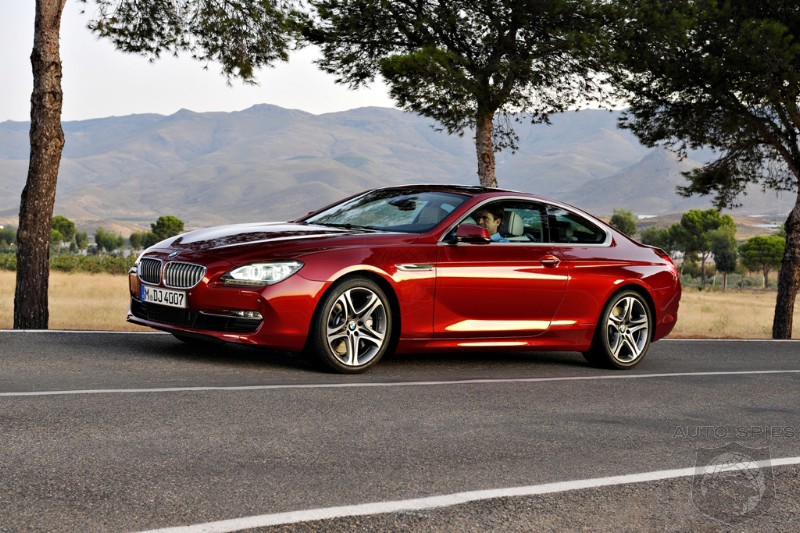


















![We Take Kia and Microsoft's UVO for a Test Drive [w/video]](http://www.blogcdn.com/www.autoblog.com/media/2010/01/kia-press-2010107-1024-08-630.jpg)

















